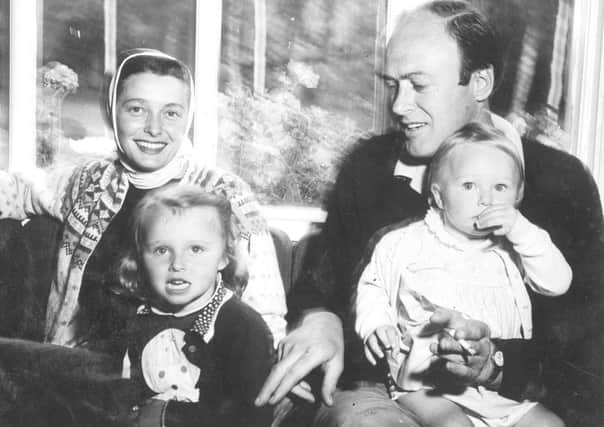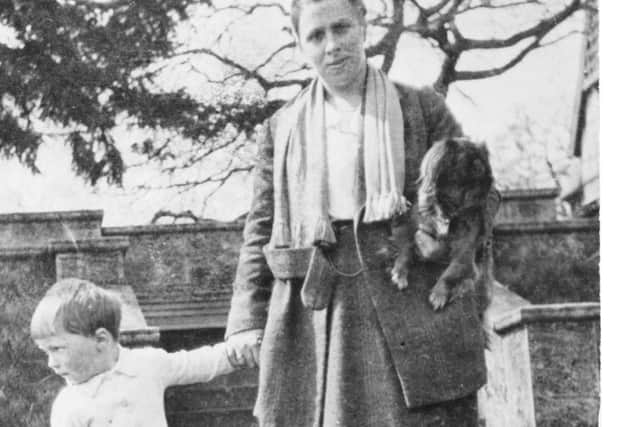Roald Dahl and the letters to his mother


“Dear Mama, I am having a lovely time here. We play football every day here. The beds have no springs…” So begins a letter that a nine year-old boy sent home to his mother, written under the watchful eye of his headmaster at boarding school.
It would, perhaps, be unremarkable if it wasn’t for the fact it was penned by Roald Dahl writing his first letter to his beloved mother, Sofie Magdalene. Dahl continued writing to his mother each week chronicling his adventures, frustrations and opinions for the next 40 years up until 1965, two years before her death.
Advertisement
Hide AdAdvertisement
Hide AdDuring his remarkable life Roald Dahl was a spy, fighter pilot, chocolate historian and medical inventor. But he’s best known as a children’s author whose brilliant books, such as Charlie and the Chocolate Factory, The BFG and Fantastic Mr Fox, were the bedtime stories fondly remembered by generations of youngsters.


In his weekly letters to his mother Dahl describes everything from his childhood excitement to the drama of being a fighter pilot during the Second World War and the thrill of meeting presidents and movie stars during his time as a diplomat and spy in Washington.
To mark the 100th anniversary of Dahl’s birth his official biographer, Donald Sturrock, was given exclusive access to this tranche of letters which he has collated in a new book – Love From Boy: Roald Dahl’s Letters To His Mother.
It offers an insight not only into Dahl’s close relationship with his mother but also a glimpse into how he became one of the greatest children’s authors of the 20th Century, and Sturrock will be talking about this fascinating, and very personal, correspondence when he appears at Raworths Harrogate Literature Festival next month.
Advertisement
Hide AdAdvertisement
Hide AdDahl wrote something in the region of 250,000 letters during his lifetime and Sturrock says the idea for a book of edited letters started while he was working on his biography of the children’s author. “I read a vast amount of letters as part of my research and I suggested to his estate about publishing a book of them.”


But given the sheer volume, he focused on the letters that Dahl wrote to his mother. “He was at boarding school and it was his first time away from home and that’s when he first wrote to his mother. That’s where it all started,” he says.
What Dahl didn’t know was that his mother had lovingly kept every single letter he wrote – more than 600 of them – over a period of five decades. It was only after she died that Dahl was given the cache of letters.
He later wrote about it in his childhood memoir, Boy: “My mother… kept every one of these letters, binding them carefully in neat bundles with green tape, but this was her own secret. She never told me she was doing it.”
Advertisement
Hide AdAdvertisement
Hide AdDahl’s mother was effectively his first reader and Sturrock says this is where he honed his gift for storytelling.


“It’s interesting because although a lot changed between him being a boy and a 49-year-old man, a lot of things also stayed the same. He kept up the facade that life was good and funny and enjoyable. He was always trying to entertain his mother and it’s where we first see his creative imagination.
“If you read the letters he’s always telling her funny stories, he doesn’t tell her about how miserable he was at school. Then during the war when he had his plane crash and nearly died he joked about the surgeons making him more attractive. He was always trying to make light of the situation to his mother.”
The letters also touch on subjects that some people might find a bit odd. “They were very un-English in some respects. His mother wasn’t prudish and he would write about lavatorial humour and sex, which weren’t the kind of things you would think a son would write about to his mother.”
Advertisement
Hide AdAdvertisement
Hide AdBut as Sturrock points out, Dahl’s father had died when he was very young after which his mother became a fulcrum in his life. “They had an enormously close relationship and they got on very well. The whole family was very close to one another.”


Sturrock finds the letters Dahl wrote before he became a writer among the most interesting. “He didn’t go to university because he loathed institutions and during the late 1930s he worked for Shell in East Africa, but I think he wanted to have more adventures than he did.”
It’s also where we first see his imagination at work. “He wrote fantastical stories in his letters. He kept a menagerie of pets and he wrote stories about animals including a glorious madcap story of a dog that gets locked in a chemist’s.
“The owner doesn’t realise and Dahl imagines the dog trying on all the different perfumes in the shop. It’s the kind of humour that 25 years later we see in his books.”
Advertisement
Hide AdAdvertisement
Hide AdWhat’s interesting is it wasn’t until Dahl was in his late 20s that he started thinking about becoming a writer. “Unlike most authors Dahl didn’t set out to become a writer he fell into it by accident.” This was after he was invalided out of the RAF and went to work in Washington.
It was while there that he met C S Forester who was writing an article for an American magazine. “Forester took him out for lunch to talk about his RAF experiences. Rather than Forester taking notes he offered to write it up and send them over to him. Forester called the next day and said Dahl’s piece didn’t need any re-writing and should be published as it was.”
If Dahl’s encounter with Forester was important, arguably the most significant moment was his near fatal plane crash in the Libyan desert in 1940. Dahl himself ascribed his desire to become a writer to what he called his “monumental bash on the head”.
“He nearly died, he couldn’t see for something like six to eight weeks and afterwards he maintained he came out of that a different person. He said he would never have become a writer if that crash hadn’t happened because it was the first time he felt he had something to write about.”
Advertisement
Hide AdAdvertisement
Hide AdIt’s now more than 25 years since Dahl’s death and the array of vivid, brilliantly-crafted characters he created in his books continue to enthrall and delight young readers. Part of his appeal was the fact he didn’t preach to readers. “He always denied he was a moralist although I actually think he was, but the moral aspect of his stories was always cleverly disguised and you never felt you were being lectured to,” says Sturrock.
The seeds of his creativity, though, were first sown in those letters to his mother. “Dahl was a storyteller and those letters were like miniature canvases that helped shape the writer he came to be.”
Donald Sturrock is appearing at the Raworths Harrogate Literature Festival on July 9 at the Crown Hotel, Harrogate. To book visit www.harrogateinternationalfestivals.com Box Office: 01423 562 303.
Roald Dahl: A way with words
Swashboggling and frobscottle are among thousands of Roald Dahl’s words to be compiled in a dictionary celebrating the centenary of the writer’s birth.
Advertisement
Hide AdAdvertisement
Hide AdAlmost 8,000 real words – and invented ones – are included in the dictionary, The Oxford Roald Dahl Dictionary, which has taken five years to compile.
Dahl famously invented words to stop his readers getting bored. Gumplewink, grobbled and sleep squiggler were unused but found in his archive during research for the book.
With his love of wordplay, Dahl would scribble his words on yellow pages from the American legal pads he used to write in, swapping letters around and adopting spoonerisms and malapropisms.